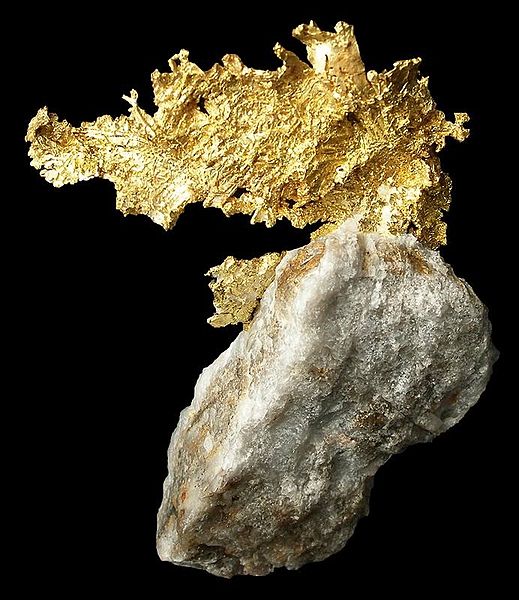Gold occurrences in Rhode Island Glocester , Rhode Island Kent County Warwick
 |
| Gold bearing pyrite crystals in quartz. Photo by Rob Lavinsky |
Gold that occurs in Rhode Island
One type of gold is found in veins of hydrothermal deposits where the gold often occurs as the native metal in quartz veins.
The second type of gold is often found in his placer deposits in sand and gravel on the beds of streams or on beaches fronting on the ocean. Gold is often panned from this type of deposits by taking advantage of its great density in relation to other minerals. Gold is 19.3 times as dense as water and most of the minerals that occurs with our only three times as dense as water. Placer gold can be found in virtually any stream or river in the world in quantities large enough to see what it looks like.
 |
| Gold in quartz. Photo by Rob Lavinsky |
In a 1927 issue of the American Mineralogist by Lloyd Fisher and Charles G. Doll of Brown University Rhode Island
This is what they said about the area around Durfee Hill, “Glocester (Durfee Hill) epidote, molybdenite, pyrite and phyrottite are present.
The third type of deposits are found in generally associated with pyrite and other metal sulfides where the gold actually appears as a thin film between the crystals of sulfide.
Another area where gold was then reported in the past is around Johnstown
Finally there has been Gold reported at the old South Foster gold mine locality where gold was produced mainly from pyriteferous quartz veins. There are said to be still visible at this locality four open pits that are now filled with water along with the ruins of a large stamp mill.
One of the areas in Newport, Rhode Island Rhode Island Narragansett Bay .
Although these last places are strictly speculative the geology is right for finding gold, and as far as that goes the entire set of rocks along the western side of Rhode Island where borders with Connecticut is another area that geologically is a good place to search for gold especially in placer deposits in the streambeds of the area.